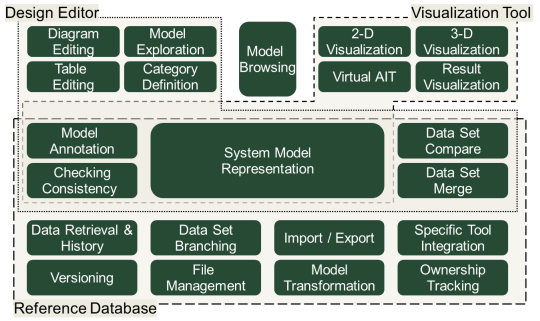VSEE Overview
The VSEE software prototypes are broken down into 3 main building blocks:
These blocks provide the following key functions (click on specific blocks for more details):

VSEE Modeling Approach
The VSEE framework in its current state offers a lot of freedom for modeling. In the absence of guidelines or constraints on how to use the metamodel, the users have to decide the way they want to use the different classes and relations of the metamodel and have to define their own modeling process.
This freedom occurs mostly at two levels:
- The first one concerns the place of the ValueProperties that hold the engineering data in the model. Since ValueProperties can be attached to most of the classes of the metamodel, the data can be spread among objects of the different aspects of the model such as topological model, functional model and behavioural model. Moreover, the multi-layered architecture of some of the aspects of the model add to this flexibility.
- The second level concerns the precise meaning given to the relations between different objects. Some relations have a clear meaning that most users should interpret the same way, but others are more ambiguous and different assumptions can lead to very different ways of modeling and of interpreting a model. Here also the multi-layered architecture ads complexity.
In order to address possible drawbacks of this flexibility some analysis has been done to provide initial guidelines for modeling, and explain the potential benefits for model exchange and exploitation. The resulting report is available in this document.
